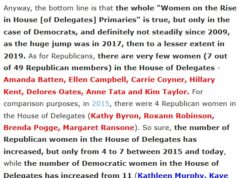 Labor Day, a holiday that originated with the labor union movement in America, has a rather confusing origin. Some people credit Peter J. McGuire, co-founder of the American Federation of Labor, for first suggesting a day be set aside to honor the workers who had built the nation. Other say the true “father of Labor Day” was Matthew Maguire of the International Association of Machinists. Either way, Labor Day started with a parade in 1882 through lower Manhattan in New York City.
Labor Day, a holiday that originated with the labor union movement in America, has a rather confusing origin. Some people credit Peter J. McGuire, co-founder of the American Federation of Labor, for first suggesting a day be set aside to honor the workers who had built the nation. Other say the true “father of Labor Day” was Matthew Maguire of the International Association of Machinists. Either way, Labor Day started with a parade in 1882 through lower Manhattan in New York City.
Labor Day as a holiday was truly a grassroots happening, first being held in cities, then being declared a holiday in states like New York, Massachusetts, and New Jersey. In 1894 Congress passed an act making the first Monday in September of each year a legal holiday in the District of Columbia and the territories.
In the past, Labor Day was a time for parades throughout the nation. Today, with the exception of a few towns like Virginia’s own Buena Vista, the holiday is just a day off from work, perhaps a cookout, and maybe shopping at Labor Day sales. However, I try to remember those labor leaders who paved the way for decent working conditions for all of us: a living wage, the end to child labor, a safe workplace, and fighting other excesses of capitalism and industrialization. My favorite early labor leader has always been Mary Harris “Mother” Jones.
After losing her entire family in a yellow fever epidemic, Mother Jones began working as an organizer for the Knights of Labor and the United Mine Workers during the beginnings of the labor union movement. Along the way, she became a legendary fighter for the rights of workers and a protector of children then being exploited by business owners.
Early in the 20th century, Mother Jones was called “the most dangerous woman in America” at her trial in West Virginia for ignoring a court injunction that forbade miners from holding meetings. Perhaps her most famous act was when she organized a “Children’s March” from Philadelphia to then-President Theodore Roosevelt’s home in New York City, protesting the non-enforcement of child labor laws and safety regulations in Pennsylvania coal mines and silk mills. She had tried to focus attention on the deplorable conditions in newspapers, but they were controlled by the owners of the mines and the mills. (Doesn’t that sound familiar?)
She had attempted earlier to meet with President Roosevelt to show him the lost fingers and limbs of children forced into mines and factories when they were as young as eight years old. She and the children on the march never got a chance to meet with Roosevelt, but that mattered very little because the Children’s March brought national attention to the abuses of child labor.
Mother Jones was arrested and jailed many times during her career for her pro-labor organizing, which mainly centered around the terrible conditions in America’s mines back then. Late in life, she wrote her own account of her career as an union organizer, The Autobiography of Mother Jones (1925).
Mother Jones also was the inspiration for Woody Guthrie’s folk song, “Union Maid.”
She became noted for her speaking ability and her sayings, many of which still ring true today:
“Pray for the dead and fight like hell for the living.”
“No matter what the fight, don’t be ladylike! God almighty made women and the Rockefeller gang of thieves made the ladies.”
“I asked a man in prison once how he happened to be there and he said he had stolen a pair of shoes. I told him if he had stolen a railroad he would be a United States Senator.”












